Our porcelain inlays in Leeds are custom-crafted to match your natural teeth, offering a durable and seamless solution for damaged teeth. You deserve a smile you’re proud of – trust our years of expertise and book your consultation today.
What are porcelain inlays?
Porcelain inlays are a straightforward, effective solution for repairing damaged or decayed teeth. They are custom-crafted to fit precisely into a tooth, restoring its original shape and function. Made from high-quality porcelain, these inlays match the natural colour of your teeth and offer durability against wear and staining.
Why have porcelain inlays?
Choosing porcelain inlays for your dental restoration combines health, aesthetics, and longevity in your smile. We understand the importance of a solution that not only looks natural but also preserves the integrity of your teeth. Here’s why porcelain inlays are a fantastic choice:
- They perfectly match your tooth colour for a seamless smile
- They’re durable and stain-resistant, lasting for 20 years with proper care
- Minimal removal of tooth structure needed
- Keeps bacteria out, supporting tooth health
- Restores functionality and prevents future damage
The process of porcelain inlays
Getting porcelain inlays is a detailed process that ensures your tooth is restored not just functionally but aesthetically, too. Here’s a step-by-step look at how we do it:
First, we’ll remove any decay or old fillings from the tooth and give it a thorough clean. This step ensures a healthy foundation for your inlay.
We then take an impression of your tooth. This impression is sent off to a dental lab, where your inlay is custom-made to fit your tooth’s exact shape and size.
While your inlay is being crafted, we’ll fit a temporary restoration over your tooth. This protects the prepared area and keeps you comfortable in the meantime.
Once your porcelain inlay is ready, you’ll come back in. We’ll check the fit and make sure it feels comfortable and looks right. If everything’s good to go, we’ll place it with a strong dental adhesive.
Why Choose Aesthetique for porcelain inlays?
Our dedication to your comfort, satisfaction, and dental health drives everything we do. Here’s why we’re the go-to choice for porcelain inlays in Leeds:
- Tailored care to meet your specific needs and comfort.
- Cutting-edge technology ensures the best outcomes with minimal discomfort.
- A welcoming and relaxed atmosphere from the moment you arrive.
- High-quality porcelain for beautiful inlays that last for years to come.
- Years of experience in providing porcelain inlay treatments.
- Clear, transparent communication about your options, procedures, and expectations.
Porcelain Inlays FAQs
-
How do I look after my porcelain inlays?
Caring for your porcelain inlays is straightforward and similar to looking after your natural teeth. Brush twice a day with fluoride toothpaste, floss daily, and make regular visits to your dentist for check-ups and cleanings. It's also wise to avoid biting down on hard foods or ice to prevent any damage. With these simple steps, you can ensure your inlays last a long time, keeping your smile bright and healthy. -
How long do porcelain inlays last?
Porcelain inlays are designed for longevity and can last anywhere from 5 to 20 years, depending on the material used and how well they are cared for. Factors like your oral hygiene habits, the foods you eat, and regular dental check-ups play a big role in their lifespan. With proper care, including good oral hygiene and avoiding hard and sticky foods, your inlays and onlays can serve you well for many years. -
Can I eat normally with porcelain inlays?
Yes, you can eat normally with porcelain inlays. They are made from durable materials designed to withstand the forces of chewing, restoring the function of your tooth to its natural state. However, it's recommended to avoid very hard or sticky foods, especially immediately after they are placed, to ensure they set properly and to prevent any damage. -
How long after porcelain inlays can I eat?
After getting porcelain inlays, it's generally a good idea to wait until the local anaesthesia wears off before eating to avoid accidentally biting your cheek or tongue. This usually means waiting a few hours. Once the anaesthesia has worn off, you can eat as you normally would. Start with softer foods and gradually move to harder foods as you become comfortable with your new inlays.
Visiting the practice
Aesthetique Dental Care 21 Wharf Street, The Calls Leeds West Yorkshire LS2 7EQ
We’re in the heart of Leeds - accessed by bus and train and have convenient on street parking.





